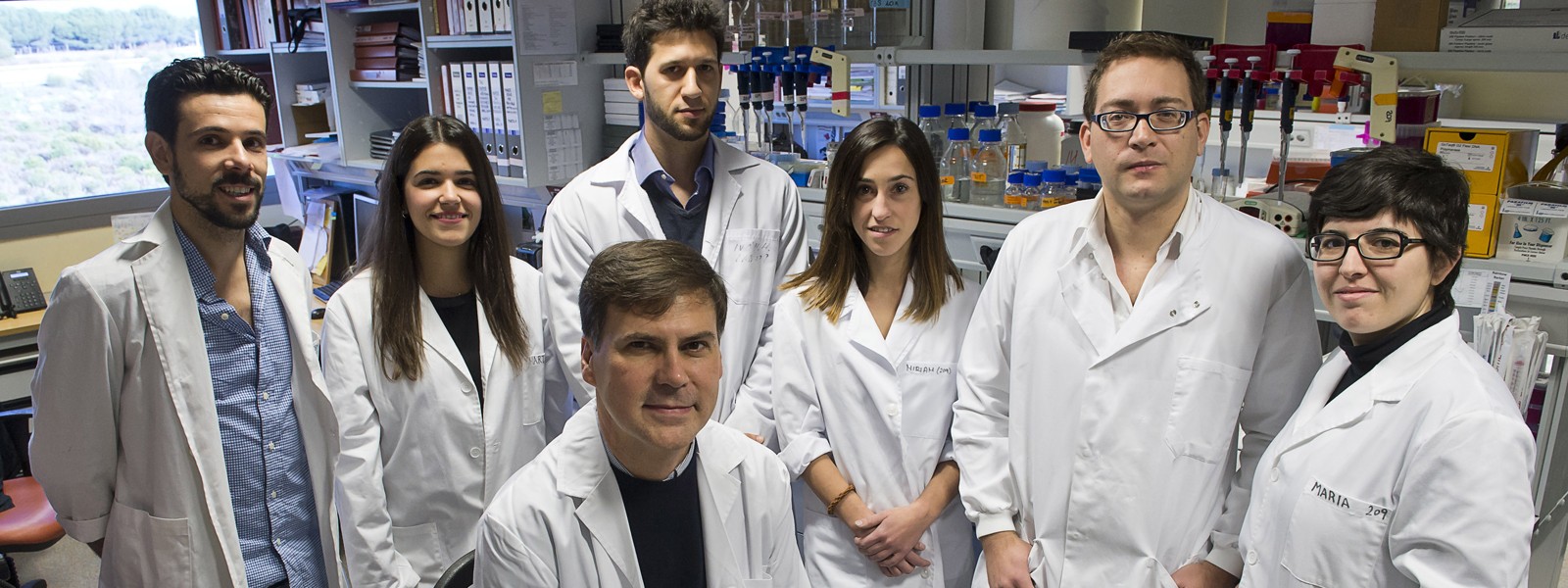DIRECTOR
RESEARCH TEAM
Alberto Rábano Gutiérrez del Arroyo, Jorge Rubén Cabrera Heredia and Izaskun Rodal González, Fundación CIEN-CIBERNED/ISCIII; María Santos Galindo, Marta Fernández Nogales and Mario López Manzaneda, Centro de Biología Molecular “Severo Ochoa” (CSIC-UAM)
COLLABORATING INSTITUTIONS
DESCRIPTION
Huntington’s disease (HD) is a devastating genetic neurodegenerative disease caused by a CAG repeat expansion in the Huntington (HTT) gene leading to a polyglutamine stretch in the HTT protein. HD thus belongs to the polyglutamine-CAG trinucleotide repeat disorders that include spinocerebellar ataxias (SCAs) -1, -2, -3, -6, -7 and -17, spinal and bulbar-muscular atrophy (SBMA) and dentatorubral-pallidoluysian atrophy (DRPLA). There are, however, noncoding repeat disorders.
These include a CAG repeat disorder, SCA12, and several CUG-repeat disorders like myotonic dystrophy 1 (DM1) and Huntington’s disease-like-2 (HDL-2). A well-established pathogenic mechanism in DM1 is misregulation of alternative splicing by sequestration of splicing factors into the hairpin formed by CUG-repeat RNA. Expanded CAG RNA has recently been reported to mimic these aspects of CUG-repeat RNA. This has led to hypothesize splicing alterations as a key pathogenic mechanism in HD and other CAG disorders.
Confirmatory evidence is found in two recent papers by our group (Fernandez- Nogales et al. Nat Med in press) and the group of G. Bates (Sathashivan et al. PNAS 2013) by RTPCR splicing analysis of two genes previously associated to neurodegeneration, microtubule-associated protein Tau (MAPT) and HTT. However, it is conceivable that many other alternatively spliced genes will be altered and contribute to the pathogenesis. Here we propose an innovative unbiased genome-wide analysis of splicing alterations by mass-sequencing of RNAs (RNAseq) from striatum of control and HD subjects.
To pinpoint the pathogenic missplicing events, bioinformatics analysis will be refined by comparison with results from RNAseq from an HD mouse model and from HDL-2, that shares the symptoms and neuropathology but is caused by a different trinucleotide. Validation of candidate genes by qRT-PCR, immunohistochemistry, etc. could enable the identification of new therapeutic targets and biomarkers for HD and other neurodegenerative diseases susceptible of being patented and translated into the clinic.

